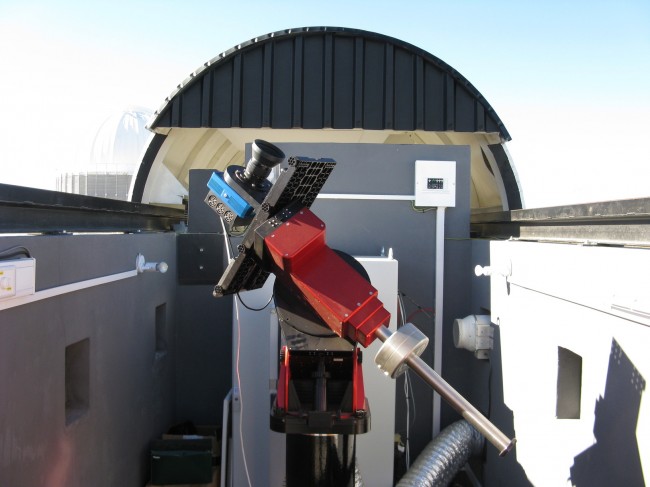KELT
My primary affiliation is with the Kilodegree Extremely Little Telescope (KELT), a transiting planet search that is led by Ohio State University, Vanderbilt University, and Lehigh University. The first telescope, KELT-North, is located at Winer Observatory in Arizona and has been monitoring the sky since 2005. KELT-South has been taking observations since 2009 and is located at the South African Astronomical Observatory.
KELT was designed to find transiting planets that are good candidates for follow-up observations, and so we have found about twenty planets to date, identifying some of the brightest known hosts of transiting planets in the process. With the long baseline of KELT, we have also contributed to the study of clusters, variable stars, and eclipsing binaries and other eclipsing but non-planetary events.
LSST
Following the same interest in exoplanets, I have also been working on the Large Synoptic Survey Telescope (LSST) for several years as part of the Transients and Variable Stars science collaboration. Much of this work has been specifically done for transiting planets and as part of the TVS Transiting Planets subgroup, of which I have recently become the new subgroup leader.
As LSST has still not begun operations and the cadence has been open to suggestion from the scientific community, I have also been involved in working on characterizing the cadence for time-domain science, with a particular interest in finding other science cases that will benefit from observations similar to the preferred observations for transiting planets. Much of this work has appeared in the LSST Observing Schedule white paper, and in the additional cadence white papers that are currently in development.
Supplementary Projects
BibtexUpdate
MendeleyUpdate
This Day In Science
The history of science is not just a gradual progression forward, but a journey that has had many stops along the way. This Day In Science is an attempt to provide daily reminders of the breakthroughs, discoveries, experiments, and missions that have taken place every day of the year.
This Day In Science can be followed either on Facebook at DayInScience or on Twitter as @DayInScience.
Acta Prima Aprilia
In the firm belief that creativity is essential in science, I am the proud founder, editor, and primary contributor to the exclusive annual journal Acta Prima Aprilia.- "Independent Discovery of a Sub-Earth in the Habitable Zone Around a Very Close Solar-Mass Star." Lund, Michael B.; Siverd, Robert J.; Stibbons, Ponder. Acta Prima Aprilia, 2018. arXiv:1804.00419
- "Detecting the Ultimate Power in the Universe with LSST." Lund, Michael B. Acta Prima Aprilia, 2017. arXiv:1703.10432
- "Astrology in the Era of Exoplanets." Lund, Michael B. Acta Prima Aprilia, 2016. arXiv:1603.09496
- "Beyond the New Horizon: The Future of Pluto." Lund, Michael B. Acta Prima Aprilia, 2015. arXiv:1504.00630